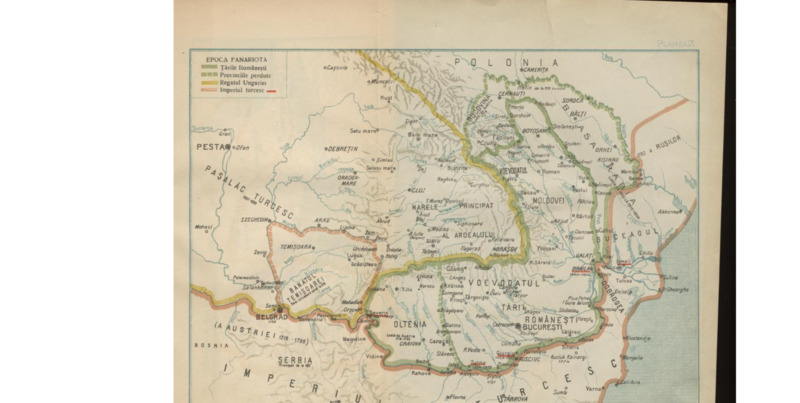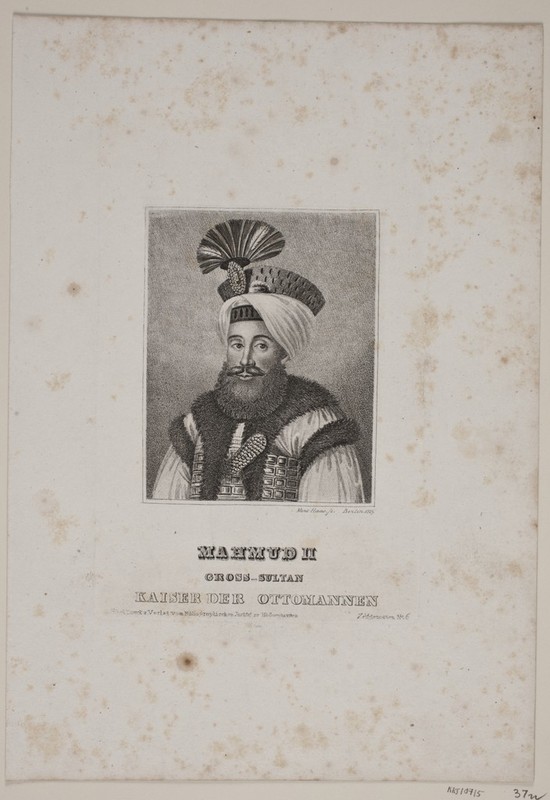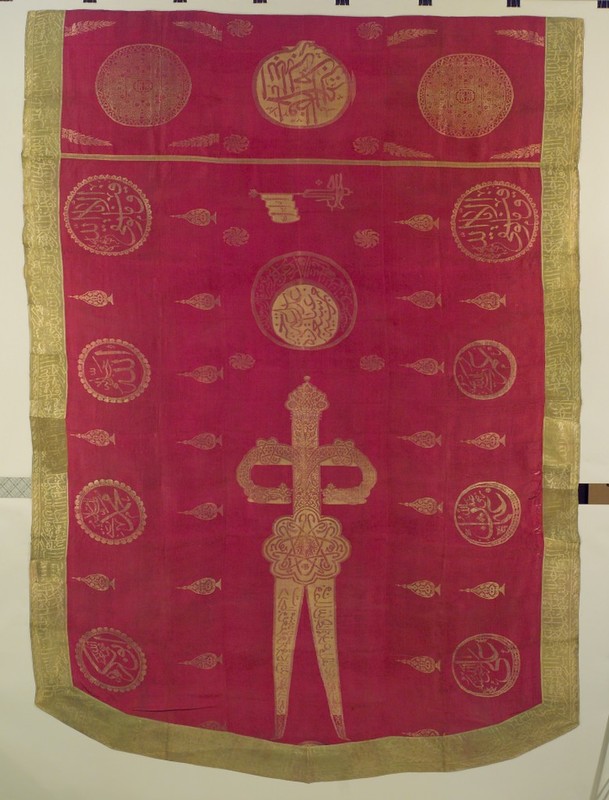All the Sultan’s Men : The Ottoman Empire and its Greeks
By the early 19th century, the Mediterranean colossus that was the Ottoman Empire had interacted with the Greek-speaking world for almost four centuries. After toppling the Byzantine Empire in 1453, the Ottoman Turks would go on to be hegemons in the eastern Mediterranean and capture the major city of Constantinople (Ottoman Turkish: قسطنطينية, Greek: Κωνσταντινούπολις). However, the Greeks were not merely sidelined by the Turks, but subsumed into the Ottoman government. The roles that Greeks played in the Ottoman government ranged from dragomen, who served as the equivalent of foreign ministers, to notable merchants, princes of the Danubian Principalities (Modern Romania), and even generals at times. Major figures in the Greek War of Independence, such as Alexandros Mavrokordatos (Greek: Αλέξανδρος Μαυροκορδάτος) and Alexandros Ypsilantis (Greek: Αλέξανδρος Υψηλάντης) were both descended from former imperial dragomen and Danubian princes appointed by the Ottomans. Greeks, specifically Phanariots (Greek: Φαναριώτες), were trusted, valued, and highly integrated members of the Ottoman imperial system.
The above map, labeled in Romanian, shows the Danubian Principalities. It should be noted that this map depicts borders that were in place before 1821, but most are very similar to those that would be found at the start of the Greek War of Independence. The principalities are surrounded by a green border, while the Ottoman Empire is surrounded by a light red border to the south and east. Bordered in yellow is Hungary, which at the time was a part of the Austrian Empire. The Phanariots, who controlled the Danubian Principalities, were a wealthy and elite group of Greeks from Constantinople, the capital of the Ottoman Empire. These Greeks were vital to the Ottoman government, and often served as rulers in the Danubian Principalities in the Sultan’s stead.
With such a multiethnic Empire, the Ottomans were bound to face conflict when nationalism was popularized in the wake of the French Revolution that had occurred during the 1790s. During the late 18th century and early 19th century, Serbs and Greeks held multiple large revolts, such as the Orlov revolt in Greece during 1770 and the Serbian uprisings that took place between 1788 and 1817. The growing tensions between the Ottomans and the Greeks would reach a head in 1821, when Alexandros Ypsilantis, a former prince of the Danubian Principalities turned Russian general and member of the Greek nationalist “Society of Friends'' Filikí Etería (Greek: Φιλική Εταιρεία), attacked the Danubian Principality of Moldavia. This action is often marked as the beginning of the Greek War of Independence, and it initially sent the Sultan, Mahmud II (Ottoman Turkish: محمود ثانى) into a panic, as he feared that A. Ypsilantis’ incursion was backed by the Russian tsar, Alexander I (Russian: Алекса́ндр I Па́влович). Though the tsar would later clarify that he did not support the attack, and Mahmud II swiftly crushed A. Ypsilantis in battle, the Sultan did not stop worrying about the possibility of Russian intervention throughout the duration of the conflict, along with unrest and revolt continuing among the Empire’s Greeks.
This image shows a small black and white shoulder-up engraving of the Ottoman Sultan Mahmud II. He is bearded, mustachioed, and wearing an elaborate turban and headdress as well as a rich, fur-lined coat. The captions below the engraving reads in German, “Mahmud II - Ottoman Emperor.” Mahmud II, the Sultan of the Ottoman Empire from 1808 to 1839, was known to be a savvy ruler who at times used ruthless tactics to secure power and legitimacy. He oversaw the empire during the Greek War of Independence, which he thought was endorsed by Alexander I of Russia, who he saw as a major threat. Mahmud is also notable for attempting to westernize the Ottoman Empire as well as for killing off the Janissary corps and establishing a European-style army.
After Alexandros Ypsilantis’ failed thrust into Ottoman territory, much of the Greek-speaking lands of the Empire erupted into revolt. This early stage of the uprising was characterized by localized mob violence between Greek Christians and various Muslim groups, such as Turks and Albanians. These massacres were extreme events, and the majority Greek populations of the Morea often had a numerical advantage, and slaughtered much of the Muslim population. To give an example of the extent of the damage, Muslim Albanians, who had been about a ninth of the population of the Morea, largely ceased to exist in the region, and perhaps somewhere around twenty-thousand Turks living in Greece were killed, with even more being sold into slavery. These acts of ethnic violence triggered counter-massacres from the Ottoman government. In Constantinople, many Phanariot Greeks were killed in reprisal, including the Patriarch, Gregorios V (Greek: Γρηγόριος Ε΄), who as the Ethnarch (Greek: ἐθνάρχης) of the Greeks, was assigned responsibility for failing to control the uprisings. Gregorios had excommunicated A. Ypsilantis during his attack, and excommunicated the rest of the rebel leaders before his execution, but paradoxically served as a martyr to the Greeks soon after his death. Anti-Greek violence in the capital was so severe at points that Mahmud II issued an order saying that it was illegal to kill any taxpayer in hopes of curbing the violence.
This banner from Constantinople is red with a gold border, as well as gold calligraphy on its surface. It is made out of silk, and looks thin and loose. One of the designs depicts Zulfiqar, the legendary split-tipped sword of Ali Ibn Abi Talib (Arabic: عَلِيّ ٱبْن أَبِي طَالِب), a companion to Muhammad. These Zulfiqar flags were standards used by the Ottomans during the Greek War of Independence, and are often attributed to Janissaries and Cavalry. Given the timeframe of the creation of this particular banner, it is not unlikely that it could have been used during the war against the Greeks.
One infamous Turkish reprisal was the massacre of Chios (Greek: Χίος), in which the island was abandoned by the revolutionary Greek army and then sacked by the Ottomans, with much of its population being killed or sold into slavery. The account of Chios reverberated around much of the world after being immortalized in Eugène Delacroix’s romantic painting, The Massacre at Chios (French: Scène des massacres de Scio). This particular incident helped alienate the Ottomans even more from the rest of their allies and neighbors during the war. The early stages of the conflict in the Ottoman Empire could even be seen as less of a war in a traditional sense, but rather a trading of massacre for massacre between both sides, and an eerie foreshadowing of the ethnic tensions between Greece and Turkey in the early 20th century.
This painting depicts a dramatized version of the Ottoman sack of the Greek island of Chios. Greek men, women, and children lie emaciated and destitute, while the landscape burns in the distance and a Turkish soldier riding a horse carries away captives. This painting by Eugène Delacroix, with its moving imagery of desperate Greeks being brutalized by the Ottomans, would help to sway public opinion in much of Europe and North America in favor of the Greek cause.
The incredibly bloody nature of the war, combined with the pre-existing European view of the Turks as outsiders, helped to demonize the Turks in the eyes of the other great powers of the world. Nations that initially supported the Ottomans, such as the British, eventually turned on them and supported the Greeks by the latter days of the conflict. Only Austria, due to its staunch non-interventionist policy, and Muhammad Ali (Ottoman Turkish: محمد علی پاشا المسعود بن آغا) of Egypt would support the Turks to the end. Mahmud II was also known to have avoided meditating with the Greeks, possibly for the fear that if the Greeks were granted special rights, they would continue to demand more until they achieved independence. An interesting note is that during the middle of the war, while the Turks and Egyptians had been gaining victory after victory against the Greeks, it was secretly revealed to the British that the Greek leadership was seriously considering negotiating with the Ottomans for additional limited freedoms while remaining subjects of the Sultan. However, due to the worsening position of the Ottoman Empire in the eyes of the international community, they would eventually be abandoned by their allies and forced to recognize the independence of a Greek kingdom. The Ottoman refusal to negotiate proved disastrous, as it directly led to the British drifting into an anti-Ottoman stance. This shows that even with victory almost assured, international pressure proved a greater force.

Preserving a People: the Greek Diaspora




